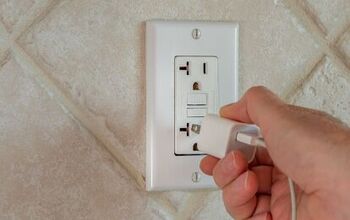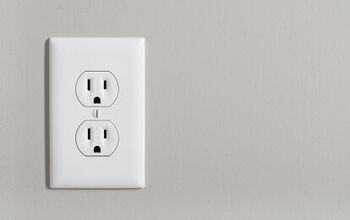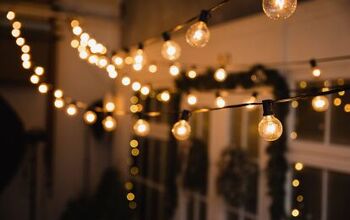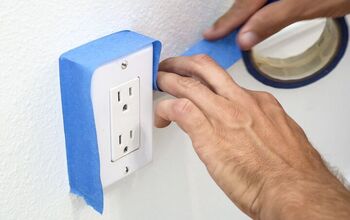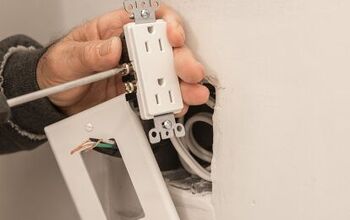Can Lights And Outlets Be On The Same Circuit? (Find Out Now!)

Dealing with wiring can be very intimidating. We all know the risks that come with handling wires, but it is necessary from time to time. Still, minimizing risk is possible as long as you abide by established safety guidelines.
Remembering those safety guidelines is crucial whenever you’re working on rewiring lights and outlets. Keep them in mind as you’re trying to figure out if lights and outlets can be installed on the same circuit.
If you are indeed wondering if lights and outlets can be present on the same circuit, that is indeed allowed. In fact, that kind of wiring setup is actually quite common in the United States. As much as possible though, avoid placing a load on those outlets that exceeds 80 percent of the circuit rating.
Work safer with wiring by knowing what you can and cannot do. Continue with this article to learn more about lights and outlets being on the same circuit and other relevant topics.
Do You Need to Hire an Electrician?
Get free, zero-commitment quotes from pro contractors near you.

Can You Install Lights and Outlets on the Same Circuit?
Installing lights and outlets on the same circuit can be a good way to solve a variety of issues at home. For instance, you can do that if you want to add lighting to an area that was previously lacking it. Adding lighting and new wiring may not be possible, but installing lights along an existing circuit could be.
Installing lights and outlets on one circuit also makes sense if you want to maximize a specific spot in your home. Create a comfortable reading nook with a bright light overhead and a fan nearby.
If you want to make a space more functional, adding lighting and an at least one outlet will help a lot. Still, you may have some reservations about that particular type of rewiring project. You may be wondering if installing lights and outlets on the same circuit is even allowed. The good news is that a setup such as that is indeed perfectly fine.
Branch circuits with a capacity of 15A or 20A can supply electricity to lights, outlets, or any combination of the two. Homeowners can opt to have that kind of setup inside their home and they won’t be violating any safety guidelines.
Are You Allowed to Install Lights and Outlets on the Same Circuit Anywhere in Your Home?
Placing both a light and an outlet on one circuit is fine. However, there are still some limitations placed on that. To be more specific, there are spots in your home where placing both lights and outlets on one circuit isn’t allowed.
The Kitchen
Keeping lights and outlets on one circuit inside the kitchen is not allowed. The appliances often used in the kitchen consume too much electricity to make that kind of practice safe. Don’t take on that kind of risk and just avoid that setup altogether.
The Laundry Room
Similar to the kitchen, the appliances in a typical laundry room use a lot of electricity. You can easily overload the outlet after plugging in a single appliance. Leave the wiring untouched in your laundry room and make the alterations elsewhere instead.
The Bathroom
This one is a bit trickier because technically, placing lights and outlets on a single circuit in the bathroom is fine. The issue here could be the type of circuit you have.
You cannot add lights or outlets to a bathroom circuit that supports another outlet outside of the bathroom. The circuit to be altered should only be catering to items in need of electricity inside that part of your home.
What Are the Risks of Installing Lights and Outlets on the Same Circuit?
Now that we know that placing lights and outlets on a single circuit is allowed, we must ask an important follow-up. Should you install lights and outlets on the same circuit?
To find the answer to that important question, let’s consider the possible risks involved in such a move. We can talk about them in greater detail below.
The Wires in Place May Not be Appropriate for Additional Outlets
Let’s assume that the lights were the first ones installed on a particular circuit. That can be an issue if you want to add some outlets.
You see, light fixtures don’t use a lot of electricity. More often than not, electricians use thin wires when accommodating light fixtures. Again, that’s not a problem because lights don’t place a big load on the circuit.
Things change when you add new outlets to the mix. The appliances you plug into those outlets will require more electricity than the lighting fixtures. They are also likely to place a greater amount of strain on the wires.
A fuse could blow out after you plug in an appliance. Now, you have a real problem on your hands.
You Could Lose Both the Light and the Outlet
Another common issue that pops up in circuits populated by both lights and outlets is the simultaneous blowout. Even if the issue was caused by an appliance being plugged into the outlet, the light will be affected too.
You’ll now have to fix the circuit if you want a light and/or outlet in that part of your home again. One can argue that keeping the circuits separate would be easier and safer.
Replacing an Outlet Could Be Tougher in the Future
This particular issue isn’t as common as the other two, but it could still pop up. If you need to replace an outlet later on, having it on the same circuit as a light can be troublesome. You’ll have to use a different light source because you’ll be turning the circuit off.
How Much of an Electrical Load Can You Put on an Outlet?
There are limits on how much electricity an outlet can safely supply especially if there are lights present along the circuit. You have to be mindful of what those limits are to avoid any accidents.
For the most part, the limit is set at 80 percent. That means you should not plug anything into the outlet that consumes more than 80 percent of that branch’s circuit rating.
You cannot plug in anything with an ampere rating above 12 if you have a 15A circuit. Meanwhile, the limit is set at 16 if you have a 20A circuit.
What Are Common Issues That Affect Outlets?
Electrical outlets, which are also known as receptacles, can present issues that will affect how safe or useful they are. Keep an eye out for those issues and take action as soon as you notice them. The last thing you want is to use an outlet that is presenting major issues.
Broken Outlet Plate
While moving something around in your room, you may have accidentally hit the outlet. Although outlet plates are generally quite durable, they do become more susceptible to cracking as they age.
Using an outlet with a cracked plate is simply asking for trouble. Find a suitable replacement right away and get rid of that broken outlet plate.
Problematic Connections
Connection issues could be the reason why your outlet is malfunctioning. Those connection issues could also present themselves right away or they may emerge later on.
If the problems with the outlet are noticeable immediately, take that as a sign that there is no ground connection present. Whoever installed that outlet in the first place likely made an error. You may have to hire an electrician to address that particular problem.
Connection problems that arise much later are probably caused by the wires starting to loosen. To resolve that problem, you’ll have to tighten the wires manually. The outlet should remain in good condition for a long time after applying that fix.
Old Outlets
Although outlet plates are known for being very durable, they are still susceptible to aging. At some point, the openings on the outlet plate may no longer be as secure as they once were. When you plug something in, you may find that it tends to wiggle around inside the outlet.
The outlet is simply past the point where it should still remain in use. Go ahead and shop for a replacement plate and use that. Replace that old outlet as soon as possible because it can be a fire hazard if left alone.
Do You Need to Hire an Electrician?
Get free, zero-commitment quotes from pro contractors near you.

Related Questions
How Many Outlets Can You Add to a Single Circuit?
The rule of thumb when it comes to adding outlets to a circuit is to reserve 1.5 amps for each one. Remember though, you should only use up to 80 percent of a circuit’s capacity.By following all those guidelines, you can determine how many outlets can be installed on a given circuit. For a 15A circuit, you can add eight outlets and 20A circuits can hold up to 10 outlets.
How Can You Tell if a Circuit Is Overloaded?
An overloaded circuit can be very dangerous. Thankfully, it’s pretty easy to spot a circuit that is transferring too much electricity.Lights powered by an overloaded circuit may start to flicker. You may also hear some sizzling and smell something burning if an overloaded circuit is nearby. Outlets that have become discolored earlier than expected may also be hinting at an overloaded circuit. You may also feel a slight shock whenever you plug something into an overloaded outlet.Make repairs the moment you notice those aforementioned signs of an overloaded circuit. Seek help from an electrician to ensure that the problematic circuit is safely handled.
More Related Guides

Gary Evans is passionate about home improvement. He loves finding out how to make improvements in the easiest, most practical, and most affordable ways. Upgrading his home kitchen is one of his ongoing hobbies. Gary is also a long-time content creator and enjoys spending his free time tending to his hydroponic vegetable garden.
More by Gary Evans










